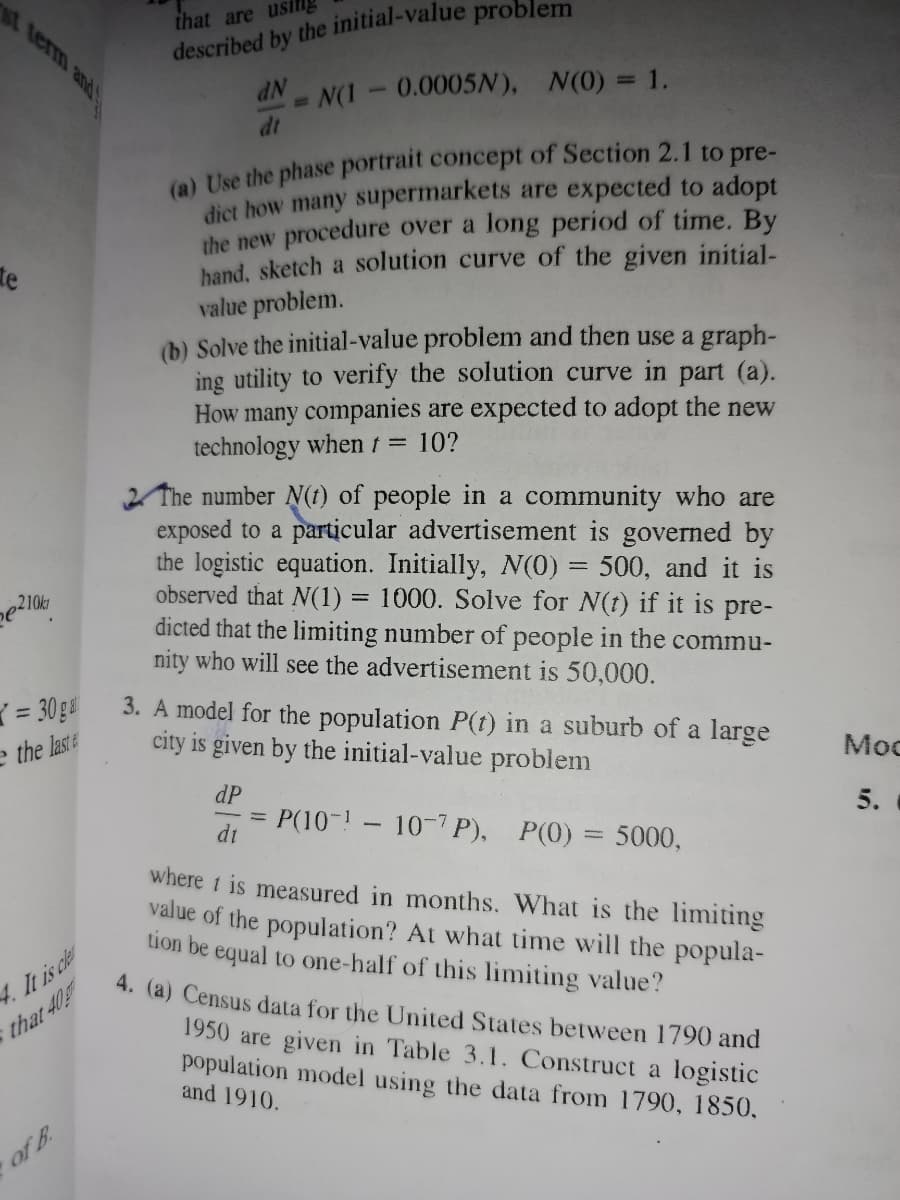3. A model for the population P(t) in a suburb of a large city is given by the initial-value problem 5 dP P(10-- 10-7 P), P(0) = 5000, dt %3D where 1 is measured in months. What is the limiting value of the population? At what time will the popula- tion be equal to one-half of this limiting value? 4. (a) Census data for the United Staton
3. A model for the population P(t) in a suburb of a large city is given by the initial-value problem 5 dP P(10-- 10-7 P), P(0) = 5000, dt %3D where 1 is measured in months. What is the limiting value of the population? At what time will the popula- tion be equal to one-half of this limiting value? 4. (a) Census data for the United Staton
Algebra & Trigonometry with Analytic Geometry
13th Edition
ISBN:9781133382119
Author:Swokowski
Publisher:Swokowski
Chapter5: Inverse, Exponential, And Logarithmic Functions
Section: Chapter Questions
Problem 9T
Related questions
Question
100%
Solve question 3 only and plz show all steps.. solve now in one hour

Transcribed Image Text:st term and
that are usn
N(1-0.0005N), N(0) = 1.
dt
dịct how many supermarkets are expected to adopt
the new procedure over a long period of time. By
hand, sketch a solution curve of the given initial-
value problem.
(b) Solve the initial-value problem and then use a graph-
ing utility to verify the solution curve in part (a).
How many companies are expected to adopt the new
technology whent 10?
te
2 The number N(1) of people in a community who are
exposed to a particular advertisement is governed by
the logistic equation. Initially, N(0) = 500, and it is
observed that N(1) = 1000. Solve for N(t) if it is pre-
dicted that the limiting number of people in the commu-
nity who will see the advertisement is 50,000.
= 30 g
3. A model for the population P(1) in a suburb of a large
city is given by the initial-value problem
e the laste
Moc
dP
5.
P(10-!- 10-7P),
dt
P(0) = 5000,
where t is measured in months. What is the limiting
value of the population? At what time will the popula-
tion be equal to one-half of this limiting value?
4. It is cle
that 40
4. (a) Census data for the United States between 1790 and
1950 are given in Table 3.1. Construct a logistic
population model using the data from 1790, 1850,
and 1910.
of B.
Expert Solution
This question has been solved!
Explore an expertly crafted, step-by-step solution for a thorough understanding of key concepts.
This is a popular solution!
Trending now
This is a popular solution!
Step by step
Solved in 5 steps with 5 images

Recommended textbooks for you

Algebra & Trigonometry with Analytic Geometry
Algebra
ISBN:
9781133382119
Author:
Swokowski
Publisher:
Cengage

Algebra & Trigonometry with Analytic Geometry
Algebra
ISBN:
9781133382119
Author:
Swokowski
Publisher:
Cengage